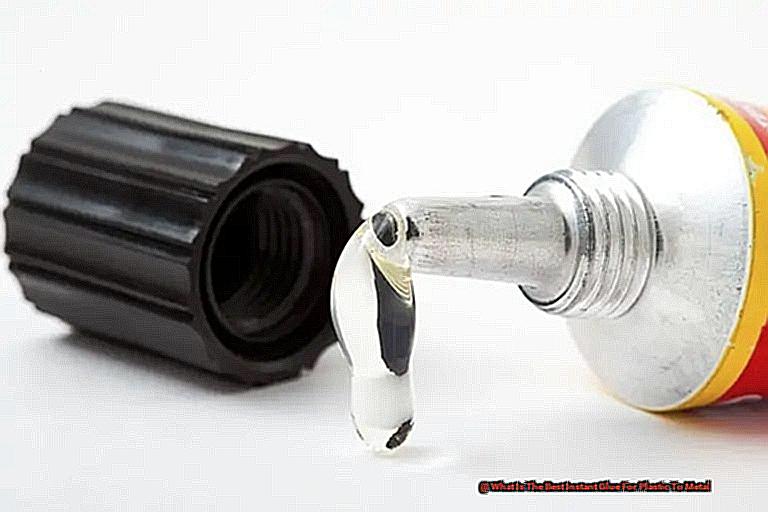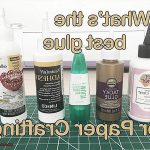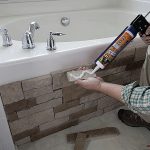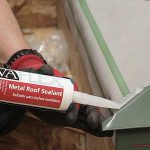We know how tricky it can be to find the perfect adhesive that really sticks these two materials together. But don’t worry, we’ve got your back.
In this article, we’ll explore the top-rated instant glue that’s specially designed for bonding plastic to metal. We’ll talk about its incredible strength and durability, its lightning-fast curing time, and its incredible versatility.
So let’s jump right in and discover the ultimate glue for your plastic-to-metal projects.
What is Instant Glue?
Contents
- 1 What is Instant Glue?
- 2 Different Types of Instant Glue for Plastic to Metal
- 3 Advantages and Disadvantages of Using Instant Glue for Plastic to Metal
- 4 Tips for Choosing the Right Instant Glue for Plastic to Metal
- 5 Preparing Surfaces Before Applying the Instant Glue
- 6 Applying the Instant Glue Properly
- 7 Clamping and Holding Bonded Parts Together Until Curing Time Is Complete
- 8 Considerations When Choosing the Best Instant Glue for Plastic to Metal
Instant glue, also known as cyanoacrylate adhesive, is a remarkable type of adhesive that bonds surfaces quickly and securely. Its fast-setting properties, strong bond strength, and versatility make it a popular choice for various applications, particularly bonding plastic to metal.
At its core, instant glue is formulated with cyanoacrylate, a resin that polymerizes rapidly when exposed to moisture. This rapid polymerization process allows the glue to create a strong and durable bond in a matter of seconds. The resulting bond can withstand immense stresses and strains, ensuring reliable adhesion.
One of the standout features of instant glue is its ability to bond different materials, including plastic and metal. This makes it an ideal choice for projects where these materials need to be joined together. Whether you’re repairing a broken plastic component on a metal surface or embarking on a DIY project incorporating plastic and metal parts, instant glue will provide a dependable and long-lasting bond.
The way instant glue works is by establishing a chemical bond between the plastic and metal surfaces. When applied, the glue permeates the microscopic pores of the materials, creating robust intermolecular forces that hold them together. However, it’s crucial to ensure that the surfaces being bonded are clean and free from contaminants like oil or dirt, as these can hinder the bonding process.
When selecting an instant glue for bonding plastic to metal, several factors should be taken into consideration. Firstly, consider the compatibility of the glue with the specific types of plastic and metal you’re working with. Different plastics and metals possess varying surface properties that can affect the bonding performance of the glue. It’s advisable to choose a glue specifically formulated for bonding plastic to metal or one that has been tested and recommended for this application.
Additionally, the required bond strength for your project should be considered. Instant glues come in different strengths, so it’s vital to select one that meets the demands of your particular application. Moreover, take into account the working time and setting time of the glue. Some instant glues offer a longer working time, allowing for adjustments to be made before the bond sets completely.
Different Types of Instant Glue for Plastic to Metal
Cyanoacrylate Adhesive (Super Glue):
- Super glue is fast and strong, bonding plastic to metal within seconds.
- It works well on various plastics like ABS, PVC, and acrylics, as well as metals such as steel, aluminum, and copper.
- Super glue provides excellent adhesion and is resistant to temperature changes and moisture.

Epoxy Adhesive:
- Epoxy adhesive consists of two components: resin and hardener.
- When mixed together, it creates a strong and durable bond that can withstand high temperatures and resist impact.
- Epoxy adhesive is suitable for a wide range of plastics and metals, including polypropylene, polycarbonate, and stainless steel.
Polyurethane Adhesive:
- Polyurethane adhesive forms a flexible bond that can withstand vibrations and impact.
- It is resistant to water, heat, and chemicals, making it suitable for both indoor and outdoor applications.
Acrylic Adhesive:
- Acrylic adhesive, also known as acrylic-based super glue, has excellent adhesion properties and resistance to temperature variations.
- It forms a strong bond that can withstand impact and vibrations, making it ideal for automotive and aerospace industries.
Specialty Adhesives:
- Some adhesives are specifically formulated for bonding difficult-to-bond plastics like polyethylene or polypropylene.
- These specialized formulations ensure excellent adhesion on these types of plastics.
Considerations for Choosing the Right Glue:
- Consider the specific requirements of the project, including the type of plastic and metal being bonded, load-bearing capacity required, environmental conditions the bond will be exposed to, and desired curing time.
Advantages and Disadvantages of Using Instant Glue for Plastic to Metal
Using instant glue for plastic to metal can provide numerous advantages, but it also has its fair share of disadvantages. Understanding these pros and cons is crucial in determining whether instant glue is the right choice for your project.
One of the main advantages of using instant glue is its quick bonding capability. As the name suggests, instant glue provides fast and efficient bonding between plastic and metal surfaces. Unlike other adhesives that require hours or days to fully cure, instant glue offers immediate adhesion. This time-saving feature can be a significant advantage in any project where time is of the essence.
In addition to its quick bonding, instant glue also boasts versatility. It is suitable for a wide range of plastic and metal materials. Whether you are working with ABS, PVC, polycarbonate, steel, aluminum, or copper, instant glue can bond these materials together effectively. Its versatility makes it a convenient choice for different applications.
Another advantage of using instant glue is its high strength. It forms strong bonds between plastic and metal surfaces, providing reliable and long-lasting results. The bonded materials can withstand vibrations, impacts, and temperature fluctuations without compromising their integrity. This strength ensures the durability of the bond and the longevity of the project.
Precise application is another benefit of using instant glue. Most instant glues come with applicators that allow for precise and controlled dispensing. This feature enables users to apply the adhesive exactly where it is needed without creating messy or uneven bonds. The precise application ensures a clean and professional finish for your project.
However, despite its advantages, instant glue does have some disadvantages that must be considered. One drawback is its limited gap filling ability. Instant glue is not ideal for bonding materials with large gaps or uneven surfaces. Its low viscosity nature means it cannot fill gaps effectively, which may compromise the strength and integrity of the bond. If your project requires gap filling, you may need to consider alternative adhesives.
Another disadvantage of instant glue is its lack of flexibility. While it creates strong bonds, it may not be suitable for applications that require flexibility. Plastic and metal materials expand and contract at different rates due to temperature changes, which can lead to stress on the bond line. In such cases, a more flexible adhesive may be necessary to ensure the longevity of the bond.
Potential damage to surfaces is another concern when using instant glue. Some instant glues contain solvents that can cause discoloration or damage to certain plastic or metal surfaces. To avoid any unwanted effects, it is crucial to test the adhesive on a small, inconspicuous area before applying it to larger surfaces.
Lastly, instant glue has a limited repositioning time. Once it comes into contact with a surface, it begins to bond rapidly. This leaves little time for repositioning or readjustment. It is essential to carefully align the plastic and metal parts before applying the adhesive to ensure proper bonding.
Tips for Choosing the Right Instant Glue for Plastic to Metal
Choosing the right instant glue for plastic to metal bonding is crucial to ensure a strong and durable bond between the materials. Consider the following tips to make an informed decision:
- Compatibility of Materials: Different types of plastics and metals have varying bonding characteristics. It is important to choose a glue that is specifically designed for bonding plastic to metal. Look for glues that have additives to enhance adhesion and ensure compatibility between the two materials.
- Strength and Flexibility: Consider the strength and flexibility requirements of your project. If the bonded parts will be subject to vibration or movement, a flexible glue may be more suitable to prevent the bond from breaking. On the other hand, if you need a strong and rigid bond, choose a glue that provides high strength.
- Curing Time: Check the curing time of the instant glue. While instant glues generally have a fast curing time, it is important to check the manufacturer’s instructions to ensure that the glue will cure within a reasonable timeframe for your project. Some glues may require longer curing times for optimal bond strength.
- Temperature Resistance: Consider the temperature resistance of the glue, especially if your plastic and metal parts will be exposed to high temperatures. Choose a glue that can withstand temperature extremes without losing its bond strength.
- Compatibility Testing: Before applying the glue on a larger scale, test its compatibility with your specific plastic and metal materials. Apply a small amount on an inconspicuous area to ensure it does not damage or discolor the materials, particularly if you are working with sensitive plastics or metals.
- Application Method: Consider the application method of the instant glue. Choose a form that is convenient and easy to use for your specific project, such as liquid, gel, or spray. Additionally, consider whether the glue requires any special application techniques, such as priming the surfaces or using clamps for a secure bond.
Preparing Surfaces Before Applying the Instant Glue
For a seamless and secure bond, proper surface preparation is key before applying instant glue to plastic or metal surfaces. Don’t overlook these essential steps that will maximize adhesion and ensure a strong bond. Here’s what you need to know:
- Cleanse with precision: Say goodbye to dirt, dust, grease, or any other contaminants that can hinder the bonding process and weaken the adhesive strength. Thoroughly clean both the plastic and metal surfaces using a mild detergent or cleaning solution. Rinse them meticulously with water and allow them to dry completely before proceeding.
- Embrace imperfections: To achieve an impeccable bond between plastic and metal, embrace imperfections by gently roughening the surfaces. Employ fine-grit sandpaper to lightly sand both surfaces. The aim is not to obliterate material but rather to create a textured surface that enhances the adhesive’s grip.
- Shed old layers: Bid farewell to existing coatings such as paint or varnish on either the plastic or metal surface. These layers act as barriers, preventing direct contact with the glue and compromising bond strength. Utilize appropriate methods like sanding or chemical strippers to remove these coatings and expose the bare surfaces.
- Prime for perfection: Elevate your surface preparation game by considering a primer specifically designed for bonding plastic to metal. Primers work their magic by creating a chemical reaction between the plastic and metal surfaces, promoting superior adhesion. Follow the manufacturer’s instructions meticulously, as application methods may vary depending on the product.
- Test the waters: Before committing to covering the entire surface, it’s wise to test compatibility in a small, inconspicuous area. Apply a minute quantity of glue to both plastic and metal surfaces, allowing it to cure according to the manufacturer’s instructions. After curing, assess bond strength and ensure that the glue doesn’t cause damage or discoloration. This crucial test will determine if your chosen instant glue is suitable for bonding plastic to metal.
Applying the Instant Glue Properly
Applying instant glue properly is crucial for creating a strong and durable bond between plastic and metal surfaces. To achieve the best results, it is important to follow a few key steps.
First and foremost, cleanliness is paramount. Before applying the glue, ensure that both surfaces are clean and free from any dirt, grease, or oil. You can achieve this by using a mild detergent or solvent to thoroughly clean the surfaces. This step is crucial because any contaminants on the surfaces can prevent the glue from adhering properly.
Once the surfaces are clean, it is recommended to roughen them slightly using sandpaper or a file. By doing so, you create a better surface for the glue to adhere to, increasing the bond strength. This step is especially important when working with smooth or glossy surfaces that may be resistant to adhesion.
Before applying the glue, it is wise to conduct a compatibility test. Apply a small amount of glue to a hidden or inconspicuous area of the materials and check the bond strength. Different glues have varying properties and strengths, so it is important to choose the right one for your specific application.
When applying the glue, remember that less is more. Instant glue is highly adhesive, and using too much can lead to excess squeeze-out. This not only weakens the bond but also creates a messy appearance. Squeeze a small amount of glue onto one of the surfaces and then press the two surfaces together firmly. Hold them in place for a few seconds to allow the glue to set.
If needed, use clamps or tape to hold the parts together while the glue sets. This additional support ensures a secure and strong bond between the plastic and metal surfaces.
After the glue has set, it is crucial to allow sufficient curing time before subjecting the bonded parts to stress or load. The recommended curing time can vary depending on the type of instant glue used, so always refer to the manufacturer’s instructions for guidance.
Lastly, be vigilant about excess glue. If any spills or squeezes out during the bonding process, promptly wipe it away with a clean cloth or tissue. Once dried, instant glue can be difficult to remove, so it is best to address any excess glue immediately.
Clamping and Holding Bonded Parts Together Until Curing Time Is Complete
Clamping and holding bonded parts together until the curing time is complete is like giving a warm embrace to a delicate connection. It’s the final touch that ensures their union is strong and unbreakable. Let’s explore the process in more detail:
- Embracing even pressure: When you clamp the bonded parts, you create a symphony of force that dances across the bond line. This pressure allows the instant glue to spread like wildfire, intimately connecting every nook and cranny of the plastic and metal surfaces. No gaps or voids will stand a chance against this powerful embrace.
- Taming the wild ones: As the instant glue undergoes its magical transformation from liquid to solid, it can get a bit restless. Without proper clamping, the bonded parts might decide to take an impromptu dance break, shifting and moving away from each other. But fear not. Clamping keeps them in check, making sure they stay close throughout the entire curing time.
- Strength in unity: Holding the bonded parts under pressure for the full duration of the curing time is like building a fortress of strength. The longer they stay together, the stronger their bond becomes. This is where clamping truly shines, giving the adhesive ample time to work its magic and create a bond that can withstand even the toughest challenges.
- Defying failure: Without clamping, there’s a chance that everything could come crashing down like a house of cards. The adhesive might not cure properly or fail to grip both surfaces tightly. This could lead to weak spots or even complete separation. But with clamping, you defy failure, ensuring that the adhesive has everything it needs to create an unyielding connection.
- A helping hand: Clamping not only strengthens bonds but also saves you precious time and energy. Once you’ve securely clamped the parts together, you can step back and let them work their magic while you attend to other tasks. It’s like having an extra pair of hands, allowing you to be more efficient and productive.
Considerations When Choosing the Best Instant Glue for Plastic to Metal
When it comes to choosing the best instant glue for plastic to metal, there are several important considerations to keep in mind. These considerations will help ensure that you select a glue that is not only effective in bonding plastic and metal but also meets your specific needs and requirements.
First and foremost, consider the type of plastic and metal you are working with. Different plastics and metals have different properties, which can affect how well the glue adheres to them. Smooth surfaces or low surface energy may make certain plastics more difficult to bond, while certain metals may require special adhesives that can withstand high temperatures or provide superior resistance to moisture or chemicals. Understanding the specific types of plastic and metal you are dealing with is crucial before choosing a glue.
Next, consider the strength of the bond required. Instant glues vary in their bonding strength, so it is essential to determine the level of durability needed for your application. If you are bonding lightweight plastic to metal, a medium-strength adhesive may be sufficient. However, if you need a stronger bond for heavy-duty applications or if the joint will be subjected to significant stress or impact, you may want to opt for a high-strength instant glue specifically designed for plastic to metal bonding.
The setting time of the instant glue is another important consideration. Some instant glues have a rapid setting time and can bond surfaces in a matter of seconds, while others may require more time to cure fully. The setting time required will depend on your project’s specific needs and your personal preferences. If you need more time to position and align the parts before they bond permanently, you may prefer a slower-setting adhesive. On the other hand, if speed is crucial, a fast-setting instant glue may be more suitable.
Flexibility is another factor to consider when choosing an instant glue for plastic to metal bonding. Depending on the application, you may require a glue that remains flexible after curing to accommodate any movements or vibrations. This is especially important when bonding materials that expand or contract due to temperature changes. On the other hand, if the joint needs to be rigid and immovable, a glue with high rigidity and low flexibility may be more appropriate.
In addition to these factors, it is essential to consider the compatibility of the instant glue with the plastic and metal surfaces. Certain glues may not bond well to specific plastics or metals, resulting in a weak or unreliable bond. It is advisable to consult the manufacturer’s recommendations and test the adhesive on a small, inconspicuous area before applying it to the entire surface.
Lastly, consider the application method of the instant glue. Some glues come in a tube or bottle with an applicator tip, while others are available as adhesive tapes or sheets. The application method can affect ease of use and precision during bonding. Choose a method that suits your skill level and the specific requirements of your project.






